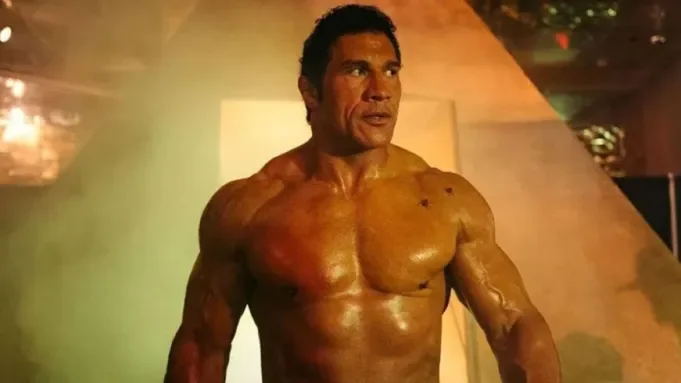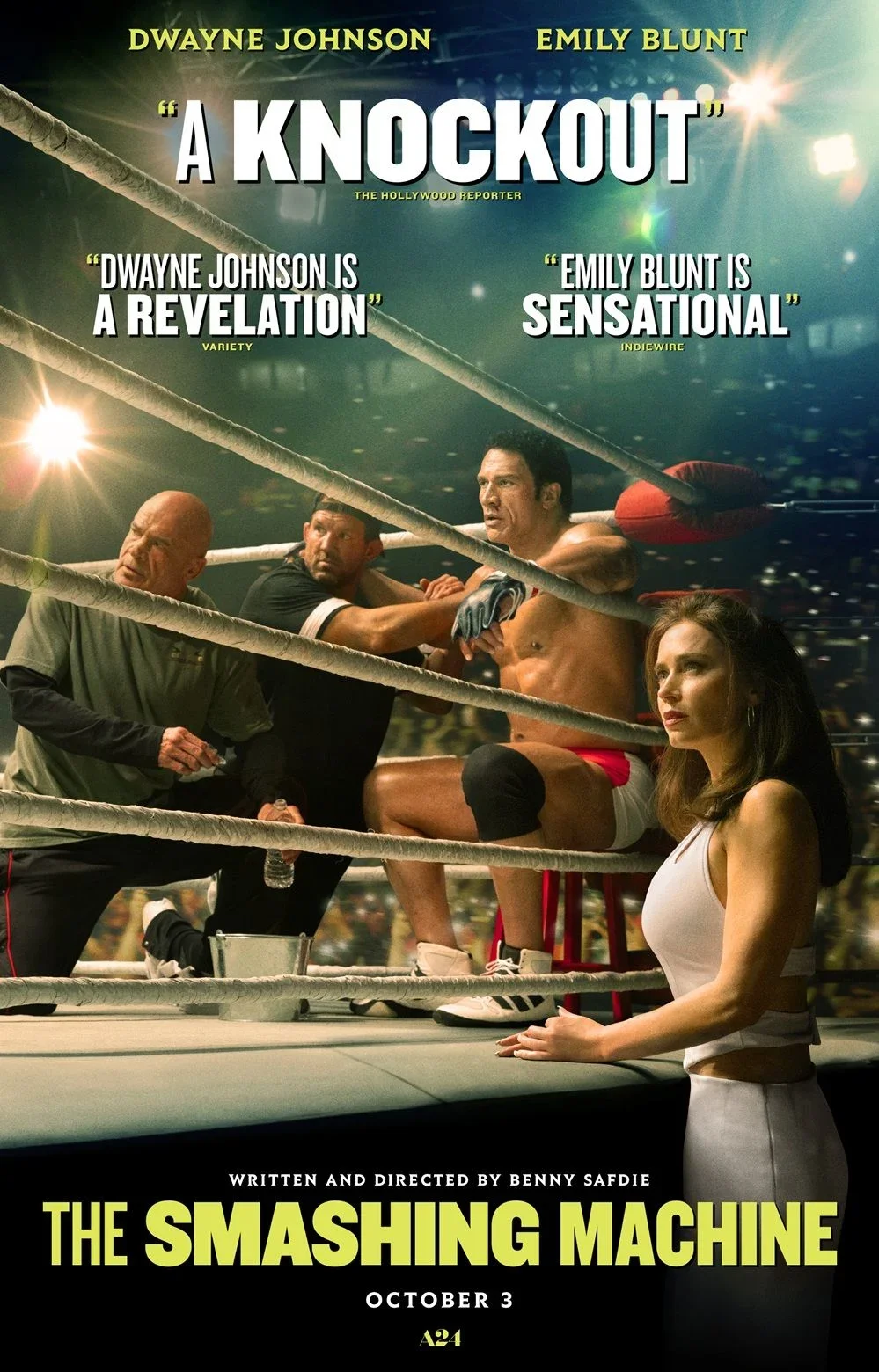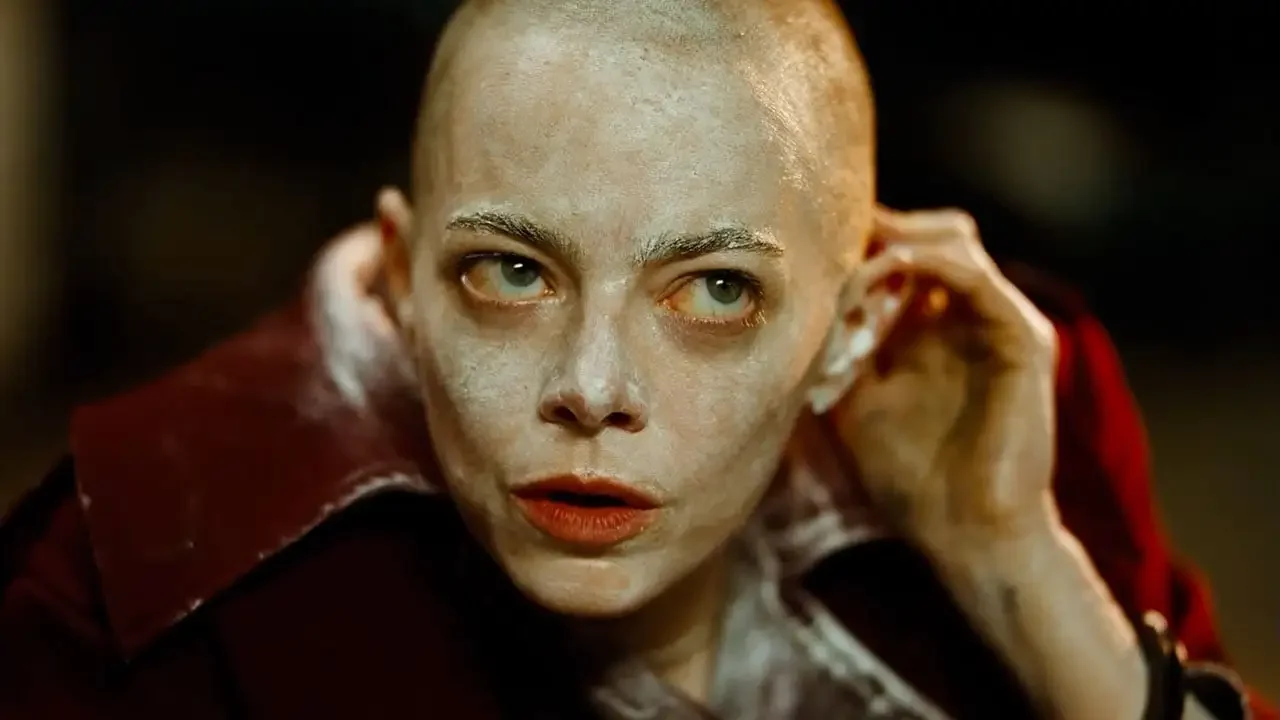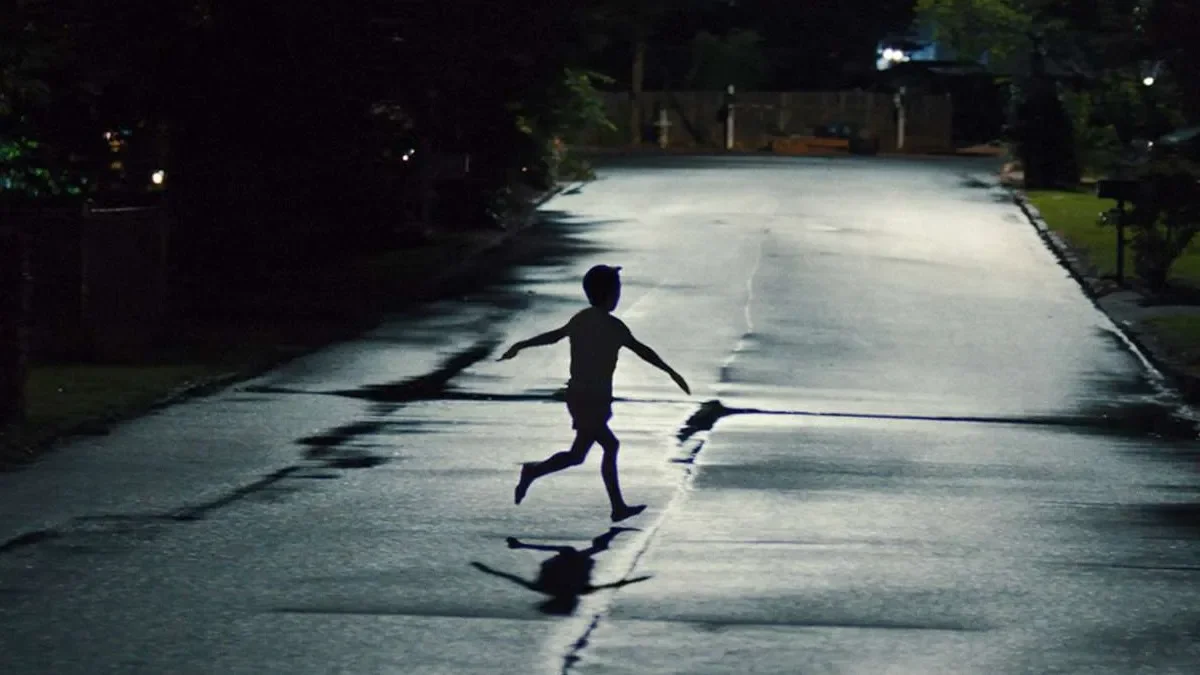The Smashing Machine
(Bennie Safdie, 2025)
⭐️⭐️ 1/2
As I was leaving the theater after seeing “The Smashing Machine”, Bennie Safdie’s biopic about mixed martial arts pioneer Mark Kerr (Dwayne Johnson), I passed by a Dave and Busters that also occupied the very nice outdoor shopping center in Folsom, California. I noticed there was a large crowd inside watching a UFC event on a row of televisions. My interest in UFC and MMA has waned incredibly over the years for a number of reasons, but even I cannot deny the popularity of the sport. It still draws large crowds in the arenas and large crowds watching its numerous broadcasts. The sport generates an incredibly large amount of money because of this interest. The juxtaposition of seeing this localized interest in mixed martial arts after watching an incredibly frustrating film about one of the sport’s pioneers was not lost on me.
Kerr, the film tells us, is an incredibly accomplished freestyle wrestler with an extensive resume built on the collegiate level. He relies on his wrestling ability once he turns professional and ascend the ranks in the world of mixed martial arts, especially during the time when there had not been a real blending of the different fighting styles. Kerr has some close associates in the fighting game, and they play large roles in his life and the story that unfolds on the screen. Mark Coleman (MMA fighter Ryan Bader) is another accomplished freestyle wrestler turned mixed martial artists, Kerr’s close friend, and Kerr’s training associate. Another MMA pioneer, Bas Rutten, (Playing himself) also serves as a trainer for Kerr. Dawn Staples (Emily Blunt) is Kerr’s girlfriend and source of constant conflict in his life when he’s not in a ring based conflict.
“The Smashing Machine” specifically tells the story about Kerr’s experiences in mixed martial arts during the years 1997 to 2000. This was a time when the UFC was still in its infancy (Many of its early events took place in my hometown of Birmingham, Alabama, and the film recognizes this. It’s one of the few positive experiences I had with “The Fighting Machine”) and still very much considered an organization that was hosting human cockfights. Other more credible MMA organizations also existed during this time, namely the Japanese based Pride. Kerr’s time and fights in Pride form the bulk of the MMA portion of “The Smashing Machine”. These fights, the money they could bring, and their negative impact on Kerr’s life, such as his dependency on pain medication, craft the story Safdie tries to tell but ultimately cannot get off the mat, no matter how hard Johnson tries with his performance.
Much has been and will continue to be said about Johnson’s performance and portrayal as Kerr. He does an admirable job with the role, but Johnson just cannot lose himself in the role. The performance still comes across as Dwayne “The Rock” Johnson only a bit more jacked and with a different haircut. It gets even more frustrating when Kerr shaves his head in advance of a big fight, and the audience is left with Johnson looking exactly like he does in everyday life. Johnson’s background in professional wrestling also serves as a hindrance. He ascended to the top of professional wrestling at the same time when Kerr was making a name for himself in Pride. Johnson’s success in professional wrestling during this time was so big that it allowed him to branch into acting. Now he’s trying to gain dramatic credibility after a career of playing action roles that were afforded to him because of his role in a profession that was somewhat adjacent to mixed martial arts.
The film’s flaws, again, are not Johnson’s fault. They lie at the feet of Safdie and some of the more baffling decisions he makes, whether it is the jazz based score that just does not work, or the overemphasis on Kerr and Staples’ relationship. I understand their problematic relationship is a big part of Kerr’s life, but Safdie presents it in such a heavy handed fashion, right down to a groan worthy metaphor about an expensive bowl Kerry buys for Staples in Japan. The audience should be able to see where that bowl is going the moment Kerr buys it, and when those scenes do happen, they have no impact whatsoever. Blunt’s performance is fine, but she is not given much to do beyond tedious scenes where Staples and Kerr bicker with each other to various levels of escalation. During one of their fights, Kerr express his exhaustion with Staples, and I could not help but notice my own exhaustion with the film at that point.
Safdie seemingly wants the audience to understand and appreciate Kerr’s contributions to mixed martial arts, especially at the expense of his own health and wellbeing. That is all fine and good, but beyond moments where Kerr is shown as a nice guy outside the ring, moments where Johnson’s infinite level of charm and charisma are showcased, it is a failed effort. Safdie’s attempts at getting the audience to care about Kerr in light of his faults take way from the moments where he also tries to tell the story of Coleman’s rise in the early days of mixed martial arts. I was left caring more about Coleman’s story and having zero care or concern with Kerr’s story. Where is the film about Coleman having to deal with his troubled friend? There is no question Kerr was a pioneer in the world of mixed martial arts, but Safdie fails to really express why this particular pioneer and his particular story was worth telling.
This review is part of my Now Playing series showcasing new releases I watched in a theater setting.





“Predator: Badlands” makes an actual Predator its protagonist in a story about overcoming one’s toxic family.